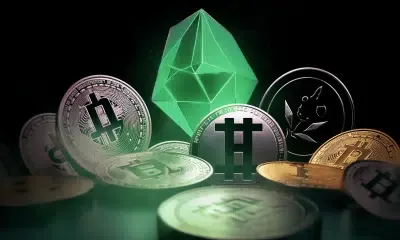Top Fintech Trends to Check Out in 2023
Unlock the future of finance today! Dive into our guide on the top fintech trends for 2023 and discover the cutting-edge technologies reshaping the global financial landscape.

The fintech landscape continues to go through drastic changes at an unprecedented pace, shaped by emerging technologies and shifting consumer behaviors. Most people are eager to stay updated on the top fintech trends of 2023 that can transform the global financial landscape.
Let’s delve into the most significant fintech trends anticipated to reshape the financial technology landscape and secure your financial future.
10 best fintech trends of 2023

Deciphering the world of fintech trends
We have listed out the top fintech trends in 2023 that you can leverage in order to transform your financial journey. Take a look:
1. Integrated payment platforms
A key example of embedded finance is the proliferation of integrated payment platforms. Services like Apple Pay and Google Pay exemplify this trend, offering users a seamless and secure payment experience within their ecosystems.
Embedded finance is not just about payments. It also encompasses services like insurance, lending, and investment, all seamlessly integrated into non-financial platforms. This trend is anticipated to expand financial services’ reach, making them more accessible and user-friendly.
Also Read: 5 Ways ChatGPT is Revolutionizing Fintech in 2023
2. Asset tokenization
Tokenization of real-world assets is expected to make a comeback as a top fintech trend in 2023. Additionally, this trend involves creating a digital token for a physical asset on a blockchain, enabling it to be bought, sold, or traded more easily.
One sector where tokenization is gaining traction is the art world. Artists and galleries are increasingly exploring tokenization as a new way to sell art, offering a digital token that represents ownership of a physical artwork. Some instances of asset tokenization may also include music and gaming non-fungible tokens (NFTs).
The potential applications of tokenization extend far beyond the art world. From real estate to supply chain management, any sector that involves the ownership and transfer of physical assets could benefit from this trend.
3. Automated credit scoring
Automated credit scoring is a modernized approach to evaluating an individual’s or business’s creditworthiness. They leverage algorithms and machine learning (ML) to process vast amounts of data rapidly. Unlike traditional credit scoring methods, which primarily rely on a few financial indicators, automated systems can analyze a plethora of data points such as payment history, current debt levels, income, and even non-traditional data like social media activity or utility payment histories.
This technology not only streamlines the lending process but also can extend financial opportunities to those who might have been overlooked by traditional scoring methods.
4. The rise of neobanks
Neobanks, or digital-only banks, are set to become more hyper-focused in 2023. By leveraging their deep understanding of customers and access to data, neobanks can develop tailored products and services that cater to specific customer segments.
Neobanks offer several advantages over traditional banks, including lower costs, greater convenience, and enhanced digital experiences. A culmination of these features has contributed to its speedy growth, emerging to be one of the top fintech trends in 2023.
5. Alternative lending
Alternative lenders fill a crucial gap in the financial ecosystem by catering to individuals and businesses that may not qualify for traditional bank loans due to poor credit history, lack of collateral, or other reasons.
These platforms often employ sophisticated data analytics and ML algorithms to assess the creditworthiness of potential borrowers more nuancedly compared to traditional financial institutions.
This often results in faster loan approval processes and a more personalized lending experience. The rise of alternative lending platforms has also stimulated competition. This urges traditional financial institutions to innovate and modernize their own processes.
Also Read: Top B2B Fintech Trends to Check Out in 2023

Unraveling the top fintech trends in 2023
6. Property technology (Proptech)
Proptech is a burgeoning sector that applies technological innovations to the real estate industry. It is emerging to be a fintech trend in 2023 owing to a number of factors. Startups in this domain are developing a range of services, including online real estate marketplaces, digital mortgage platforms, and property management software.
Proptech companies strive to streamline real estate transactions, reduce friction, and make property management more efficient through these innovations. The digitization of real estate transactions, enabled by Proptech, enhances individuals’ buying, selling, and renting experiences. However, it also provides real estate professionals with tools that automate routine tasks, analyze market trends, and optimize property portfolios.
The adoption of Proptech is poised to continue growing as more stakeholders recognize its value in improving transparency, reducing costs, and enhancing decision-making in the real estate sector.
7. Capital market digitalization
The digitization wave is transforming capital markets, introducing a new era of efficiency, transparency, and accessibility. Technologies like blockchain are at the forefront of this transformation. They enable the development of new trading platforms that can potentially reduce fraud, lower costs, and expedite transactions.
Additionally, digitalization is democratizing access to capital markets, making it easier for retail investors to participate. Automated trading systems, robo-advisors, and blockchain-based assets are some manifestations of digital technology’s profound impact on capital markets.
This trend is likely to continue as regulatory frameworks evolve to accommodate digital innovations.
8. Biometrics
Integrating biometric technology in fintech enhances both security and user experience. Biometric authentication methods like fingerprint scanning and facial recognition are becoming commonplace for accessing financial accounts and authorizing transactions. Unlike passwords or PINs, biometrics are unique to individuals, making them a more secure and convenient form of authentication.
As biometric technology continues to advance, its applications within fintech are expanding. For instance, voice recognition and behavioral biometrics can provide additional layers of security.
While privacy concerns are a significant consideration, the benefits of biometric authentication in preventing fraud and streamlining user experience are driving its adoption in the fintech sector.
9. Distributed ledger technology (DLT)
DLT, the backbone technology of blockchain, is creating a ripple effect in the fintech sector by enabling the development of innovative financial products and services. Decentralized exchanges, peer-to-peer lending platforms, and smart contracts are some examples of DLT’s potential to disrupt traditional financial models by eliminating intermediaries and enhancing transparency.
DLT’s promise extends beyond cryptocurrencies and is gaining recognition for its ability to provide secure, immutable, and transparent transaction records.
As more financial institutions explore and adopt DLT, the landscape of financial services can change significantly, leading to more efficient, transparent, and inclusive financial systems.
Also Read: How to Calculate Crypto Taxes – A Comprehensive Guide

Exploring the future of fintech trends in 2023
10. Regulatory technology (RegTech)
RegTech is a domain that focuses on helping financial institutions navigate the complex regulatory landscape. Startups in this space are developing solutions like risk management software, transaction monitoring systems, and automated customer onboarding processes that can significantly reduce the compliance burden on financial institutions.
As regulatory requirements become increasingly stringent and complex, the demand for RegTech solutions will grow. By automating routine compliance tasks and providing insights into regulatory risks, RegTech is helping financial institutions focus more on their core operations while ensuring they remain compliant.
The symbiotic relationship between fintech and RegTech will continue evolving, making it a top fintech trend in 2023. This happens as both sectors mature and regulatory frameworks adapt to the digital age.
Summing up
2023 promises to be a transformative year in the fintech landscape. These fintech trends in 2023 are set to reshape the financial services industry, offering greater convenience, efficiency, and security for consumers. Finally, as technology continues to advance, it’s clear that the future of fintech is bright and full of potential.




